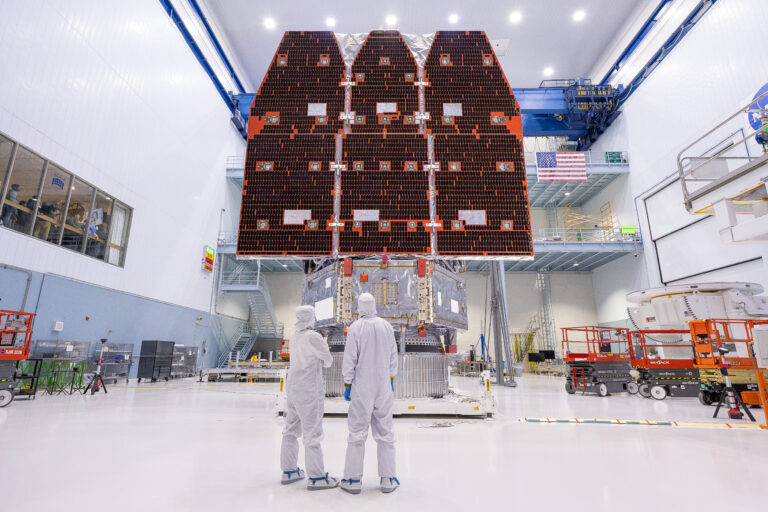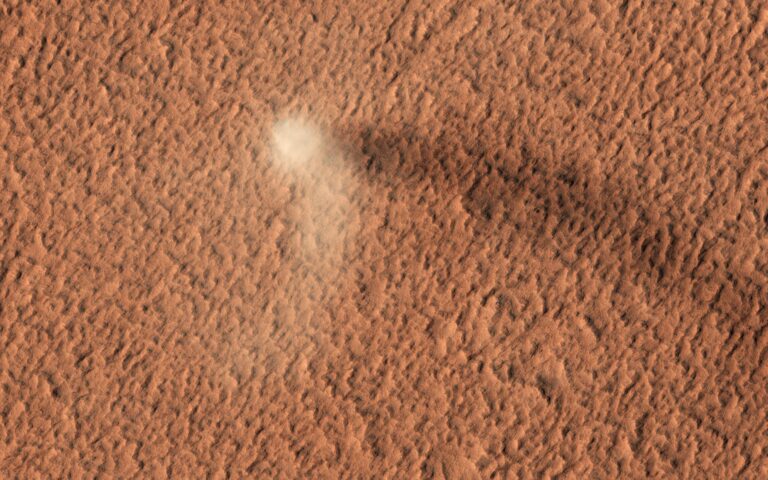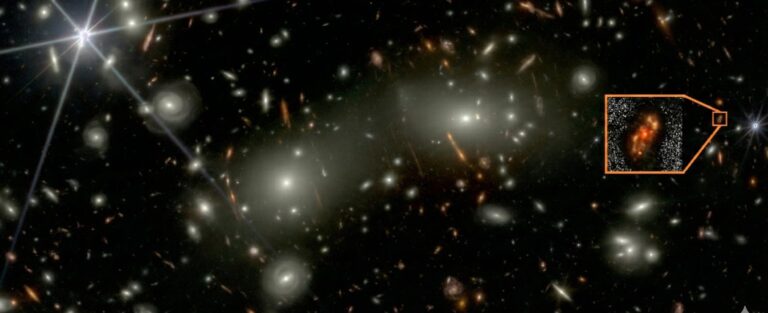Key Takeaways:
(Inside Science) — Scientists have been trying to measure the lifetime of a neutron outside an atomic nucleus for decades, and for the last 15 years, two types of laboratory experiments have provided different answers. In a new study, researchers for the second time have measured the neutron lifetime in a setting far outside the lab — space.
This new measurement — based on data captured near the moon — is less precise than the lab measurements, and it does not clarify if either of the two lab results is correct. But it shows it’s possible that future space-based measurements might be precise enough to help answer the question of how long neutrons survive. Robert Pattie, a physicist at East Tennessee State University in Johnson City who did not contribute to the new paper, called the new results “a neat experiment.”
Multiple measurements of a neutron’s lifetime
Neutrons are subatomic particles that are typically stable when they’re inside an atom’s nucleus. When they’re outside, they decay in a little less than 15 minutes into a proton, an electron and an antineutrino (an antimatter particle), but scientists aren’t exactly sure how much less than 15 minutes it takes.
Measuring the neutron lifetime precisely is important because “it tells us things about fundamental properties of physics, across a really wide range of disciplines,” said Shannon Hoogerheide, a physicist at the National Institute of Standards and Technology in Gaithersburg, Maryland, who did not contribute to the new paper. The relative abundance of hydrogen and helium in the universe shortly following the Big Bang, for example, determined the types of stars and elements in the universe, and this hydrogen-to-helium ratio depends on the neutron’s decay rate.
Scientists have measured the neutron lifetime to be 14 minutes and 39 seconds on average in a series of recent “bottle” experiments, which count the number of neutrons remaining over time, and 14 minutes and 48 seconds in the most recent “beam” experiment, published in 2013, which counts the number of protons resulting from decayed neutrons. The margins of error for these two types of experiments do not overlap, so scientists have two answers to the same question.
Both answers can’t be right, so one or both experiments might have some design flaw that results in the researchers basically miscounting the neutrons and protons. There’s also a possibility that some unknown physics might be contributing to the discrepancy, but Hoogerheide, who is working on a new beam experiment, says that “a lot of people are probably leaning towards” it being a design problem.
Now, in a paper published online Oct. 13 in the journal Physical Review C, a team of researchers has measured the neutron lifetime using data from NASA’s Lunar Prospector, which orbited the moon for almost 19 months between 1998 and 1999. The paper reports a measurement of 14 minutes and 47 seconds, give or take about 16 seconds.
The last beam experiment had a margin of error of only a little over two seconds, and a new bottle experiment was published last week, with a margin of error of less than half a second. The margin of error represents a range of likely values for the neutron lifetime based on the known limitations of the experiment. The 16-second margin of error of the space-based result pegs the lifetime as likely somewhere between 14 minutes and 31 seconds and 15 minutes and 3 seconds — so it doesn’t rule out either lab result.
In future experiments, the margin of error will need to be at least as small as a couple of seconds in order to only match one lab result. But this new paper reduces the margin of error significantly from the first space-based neutron lifetime measurements, reported in a 2020 paper by the same authors, raising the possibility that another reduction on a similar scale could be possible. “With some careful thought and careful design, maybe you could get [the margin of error] down to a low-enough level that it’s interesting from the point of view of the discrepancy,” said Hoogerheide.
Measuring neutrons in space
Neutrons are traveling through space near the moon thanks to galactic cosmic rays — high energy particles, such as protons or helium ions, moving close to the speed of light that come from sources outside the solar system, like supernovae explosions.
The moon has no atmosphere, so these cosmic rays collide with its surface. Thomas Prettyman, a senior scientist at the Planetary Science Institute in Tucson, Arizona, said that cosmic rays have so much energy that “when they collide with an atom, they produce an explosion where you get a spray of secondary particles that includes neutrons.” Prettyman did not contribute to the new study.
Some of these neutrons travel up into space, and when the Lunar Prospector was orbiting the moon, some neutrons were captured by its neutron spectrometer — a tube at the end of a boom filled with high-pressure gas that absorbs neutrons. This spectrometer, and the spacecraft’s other instruments, weren’t trying to measure the neutron lifetime — they were looking for evidence of water ice at the lunar poles. But in the absence of funding for a space mission specifically designed to answer the neutron lifetime question, researchers turned to these other data sets to see what they could find.
“It’s always fun when you can take data that exists for some other reason and go learn something new with it,” said Hoogerheide.
Jack Wilson, lead author of the new paper and a planetary scientist at the Johns Hopkins University Applied Physics Laboratory in Laurel, Maryland, first tested the idea of getting new information about neutron decay from old space missions in a 2020 paper looking at neutron data captured in 2007 and 2008 by NASA’s MESSENGER mission to Mercury.
“It hasn’t been something that large numbers of people have been expending a lot of effort on,” said Wilson. “People just assumed it couldn’t be done.”
Wilson’s new paper modeled how many neutrons the spectrometer should capture based on a number of factors, including the detector’s efficiency and the composition of the moon’s surface. Then, the researchers simulated how many neutrons should be detected for different decay rates to see which decay rate best matched the detector’s data.
Looking to Venus to improve the results
Wilson hopes that one of several upcoming NASA missions to Venus might bring along a neutron spectrometer to measure neutrons freed from Venus’ atmosphere, which is much more homogenous than the surface of the moon. The moon’s compositional complexity was the measurement’s main source of systematic error, Wilson said. Systematic error can be caused by things like broken equipment or a lack of understanding of the system being studied.
“Having a really good Venus data set would also give us, potentially, another order-of-magnitude improvement in the systematics,” he said.
Hoogerheide thinks it’s unlikely that the space-based measurements will ever be as precise as the bottle experiment. But Pattie, who works on bottle experiments, said that “even if they can’t get [the margin of error] down to 0.1 seconds, if they can get down to a few seconds and say, We agree with the bottle or the beam… that’d be pretty interesting.”
Even if this were to happen, the space-based measurement would only be “more evidence that we’d have to keep looking until you figure out why the beam and bottle don’t agree,” said Pattie.
Both Pattie and Hoogerheide think the most likely explanation for the discrepancy is some sort of error in experimental design. But a few scientists have proposed that at least some fraction of the discrepancy might be due to “new physics” — such as some small percentage of the neutrons decaying into dark matter particles instead of the protons detected by the beam experiment. But experiments haven’t found any evidence in support of dark matter theories yet.
“Everybody basically has always expected the anomaly to be systematic in nature,” said Hoogerheide. “People always want to discover new physics, but don’t really ever expect to.”
But the space-based measurements could one day be used to say that one of the two lab measurements is more likely than the other. Wilson said the idea of trying space-based measurements was appealing “just because this stalemate has existed between the two lab measurements… you want a third technique to break the stalemate.”
This story was originally published with Inside Science. Read the original here.










